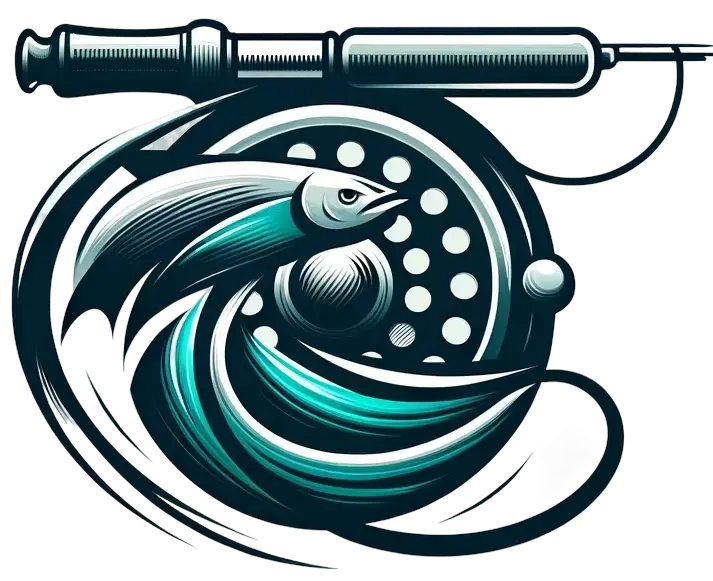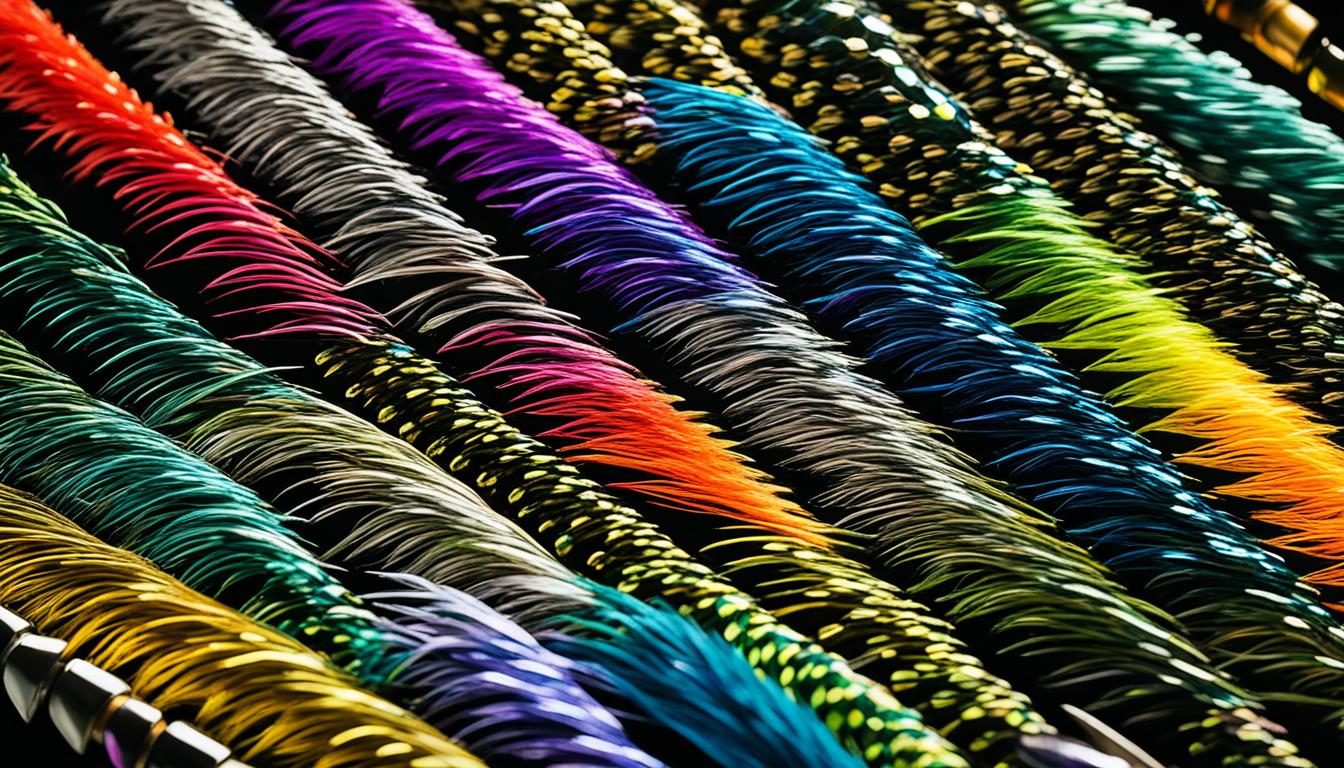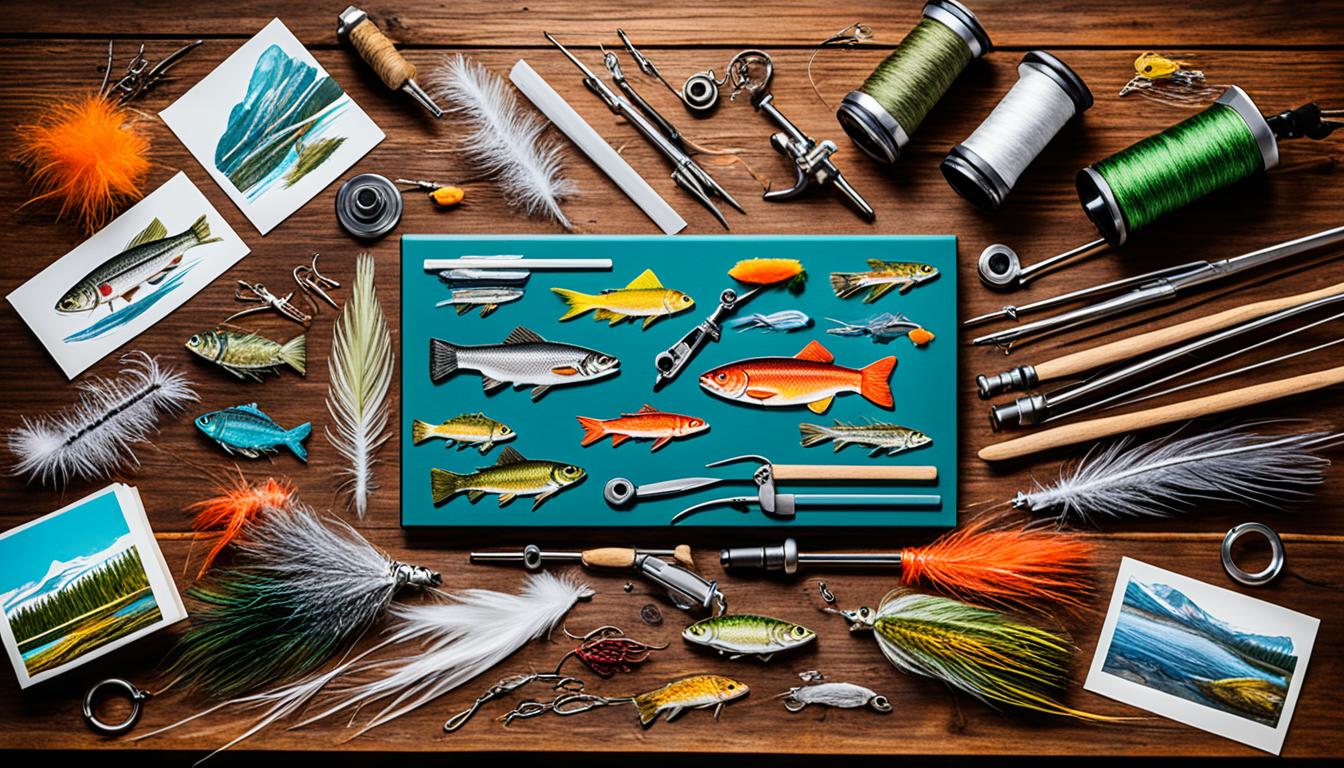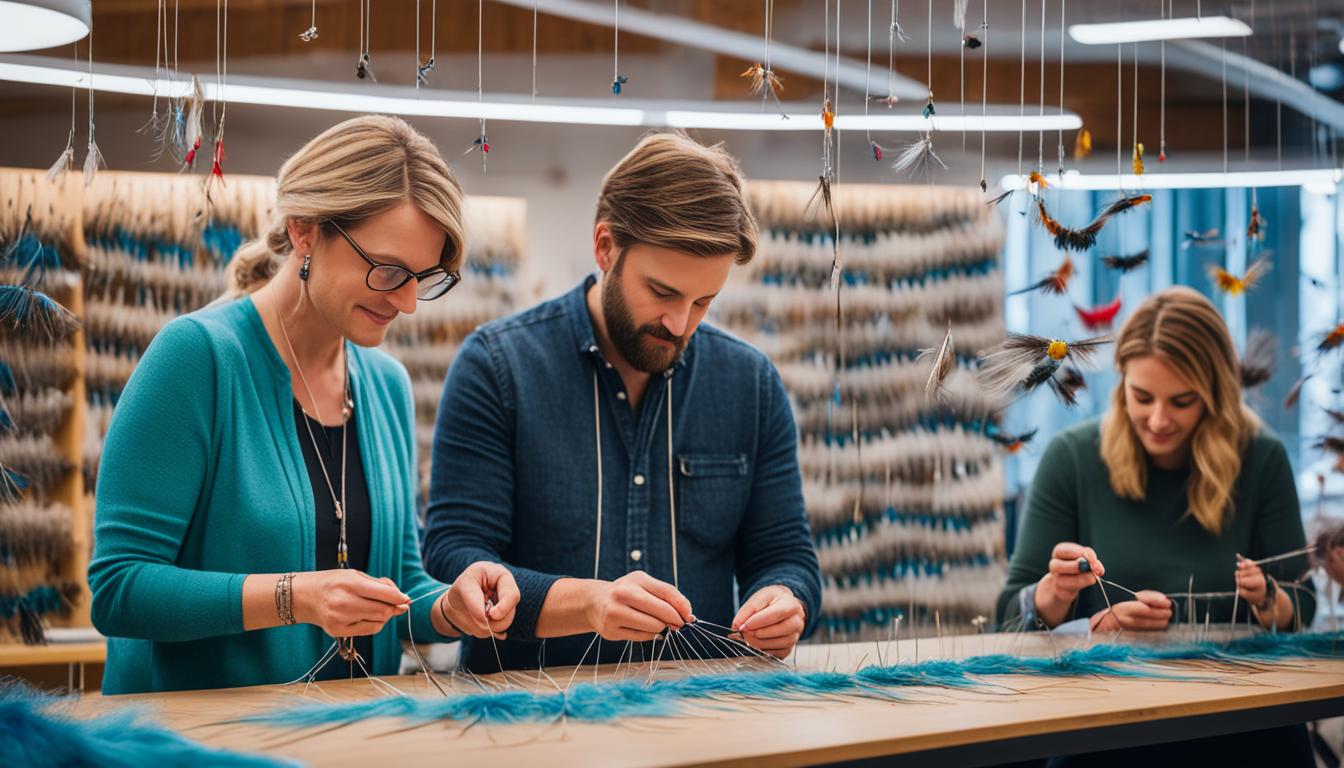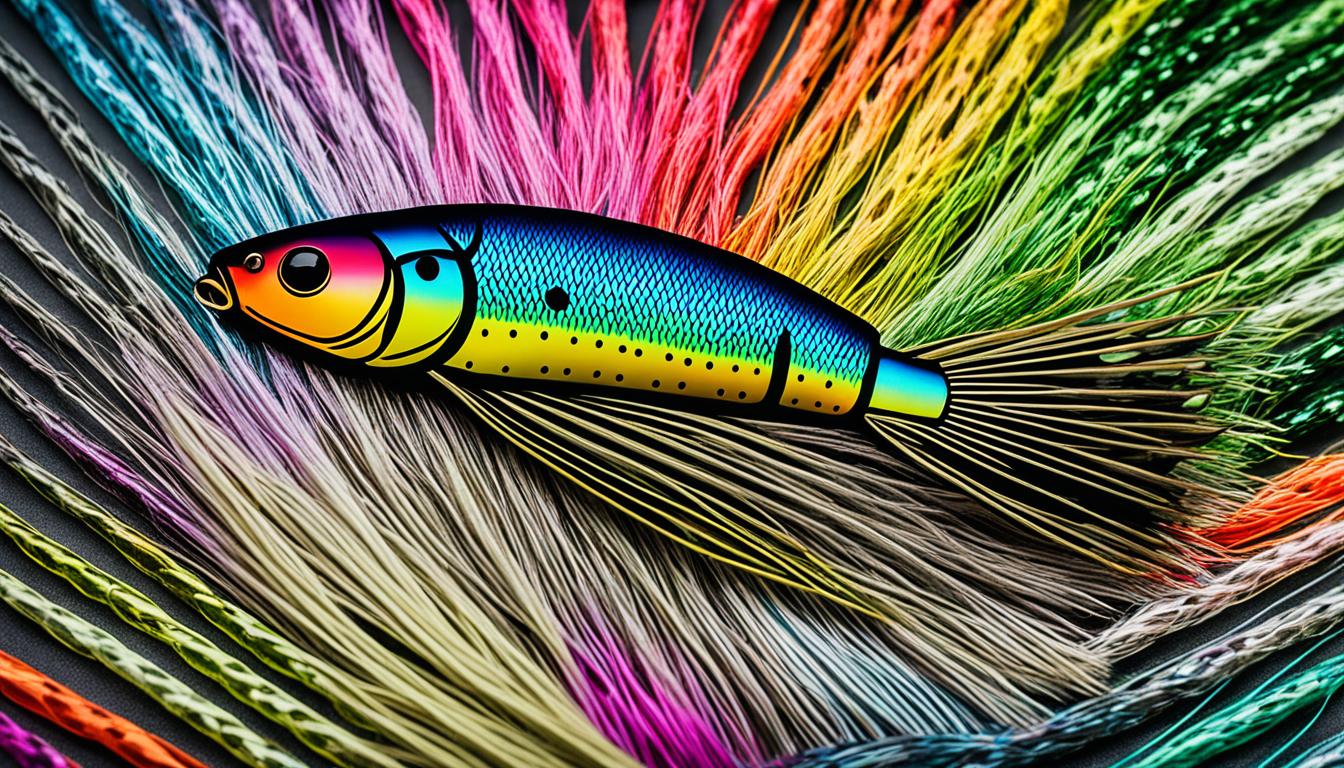Fly fishing is an art form that relies on the meticulous craftsmanship of tying artificial flies. Traditionally, natural materials like feathers, fur, and threads have been the go-to choice for creating realistic imitations of insects and baitfish. However, in recent years, the use of synthetic materials in fly tying has gained popularity among anglers.
Synthetic fly tying materials offer a plethora of benefits and can be just as effective as their natural counterparts, if not more so. They provide a similar look and feel to natural materials, especially when it comes to streamer or baitfish imitations. The vibrant colors and durability of synthetic materials make them incredibly attractive to fish, increasing your chances of a successful catch.
The versatility of synthetic materials is another factor that makes them appealing to fly tiers. You can easily taper synthetic tying materials using the twist and cut method, resulting in a more lifelike presentation. This technique involves using a good pair of scissors to twist and taper the fibers throughout the body of the fly, mimicking the natural movements of prey.
From a practical standpoint, synthetic materials are often easier to work with than natural materials. They don’t require the meticulous care and preparation that natural materials often demand. Synthetic materials also tend to be more consistent in quality, ensuring that each fly you tie is uniform in appearance and performance.
Key Takeaways:
- Synthetic materials offer a similar look and feel to natural materials in fly tying.
- Tapering synthetic tying materials can be done using the twist and cut method for a more lifelike presentation.
- Synthetic materials are durable, vibrant in color, and highly attractive to fish.
- They offer greater versatility and are easier to work with compared to natural materials.
- Synthetic materials ensure consistency in fly appearance and performance.
5 Essential Tools to Jumpstart Your Fly Tying Journey
When starting our fly tying journey, we need to have the right tools at our disposal. These five essential tools will help us create beautiful and effective flies:
Fly Tying Vise
A fly tying vise is the foundation of our fly tying setup. It securely holds the hook in place, allowing us to tie materials onto it with precision and ease.
Fly Tying Lamps
Fly tying lamps are crucial for providing sufficient lighting during the tying process. Proper lighting is essential to accurately see and work with the materials, ensuring high-quality flies.
Fly Tying Scissors
Good quality fly tying scissors are a must-have tool for precise cuts and trimming of materials. They allow us to create clean and neat fly patterns.
Fly Tying Bobbins
Fly tying bobbins hold the thread while we tie the materials onto the hook. They ensure that the thread remains secure and taut throughout the tying process, making it easier to create durable flies.
Fly Tying Pliers and Other Tools
In addition to the above tools, various fly tying pliers and other fly tying tools are helpful for different tasks. They can be used for shaping materials, securing them in place, and performing various intricate actions to enhance the overall design and functionality of our flies.
Proper Fly Tying Bench Organization
Efficiently organizing our fly tying gear on the bench is essential for easy access and smooth workflow during the tying process. A well-organized bench ensures that our tools and materials are readily available, making our fly tying experience more enjoyable and productive.
By having these essential tools and maintaining a well-organized fly tying station, we can kickstart our fly tying journey with confidence and creativity.
Choosing the Right Fly Tying Vise
The fly tying vise is one of the most crucial tools for any fly tyer. When selecting a fly tying vise, it’s essential to consider the different types and features available to find one that meets your specific needs. Some vises are designed for particular applications or hook sizes, while others offer versatility for various tying techniques.
To ensure a successful and enjoyable fly tying experience, it’s important to invest in a high-quality vise that securely holds the hook and provides stability throughout the tying process.
Types of Fly Tying Vises
There are several types of fly tying vises to choose from, each with its own advantages and suitable applications:
- Fixed Jaw Vises: These vises have a stationary jaw that holds the hook in place. They are reliable and suitable for a wide range of fly tying.
- C-Clamp Vises: C-Clamp vises attach to the edge of a table or workbench, providing stability and versatility. They are an excellent option for tyers who prefer working with larger hooks.
- Rotary Vises: Rotary vises allow you to rotate the hook as you tie, making it easier to access different parts of the fly. They are ideal for tying intricate patterns and streamers.
- Travel Vises: Designed for portability, travel vises are compact and lightweight, making them convenient for tying on the go.
Features to Consider
When choosing a fly tying vise, consider these important features:
“Investing in a high-quality vise will allow you to tie flies with precision, efficiency, and confidence.”
- Jaw Size: Ensure that the vise jaws can accommodate the sizes of hooks you typically use.
- Adjustability: Look for a vise that offers a wide range of adjustments to accommodate various hook sizes and types of flies.
- Stability: A stable vise is essential to prevent the fly from moving while you tie. Look for vises with a solid base or secure attachment mechanism.
- Rotary Function: If you plan on tying complex or streamer patterns, a vise with a rotary function allows for easier manipulation of the fly during the tying process.
- Quality Construction: Choose a vise that is durable and built to last. Look for high-quality materials, such as stainless steel or brass, and precision engineering.
Recommendations for Beginner Fly Tying Vises
For beginners looking to start their fly tying journey, here are a few vise recommendations:
| Vise | Features | Price |
|---|---|---|
| AA C-Clamp Vise | Affordable and versatile | $30 |
| Griffin Odyssey Spider Vise | Wide size range and true rotary feature | $80 |
| Peak Rotary Vise | Solid construction and versatility | $160 |
These vises offer a balance of quality, features, and affordability, making them great choices for those starting out in fly tying.
Now that you have an understanding of the different types, features, and recommendations for fly tying vises, you can make an informed decision that suits your needs and budget. Investing in a high-quality vise will allow you to tie flies with precision, efficiency, and confidence, enhancing your overall fly tying experience.
Exploring Different Materials in Fly Tying
Fly tying is a creative and intricate art form that involves using a wide array of materials to craft realistic and effective flies. Each material serves a specific purpose and contributes to the overall appearance and functionality of the fly. In this section, we will explore the various materials commonly used in fly tying, including feathers, fur and hair, threads and wires, synthetic fibers, and flash materials.
Feathers
Feathers play a vital role in fly tying, adding movement and realism to imitate the insects fish prey upon. Different types of feathers, such as hackle feathers, marabou, and peacock herl, offer unique properties that can enhance the appearance and action of the fly. Hackle feathers are commonly used to create dry flies, while marabou feathers provide a lifelike appearance and enticing movement. Peacock herl, with its iridescent qualities, adds a touch of allure to nymph and wet fly patterns.
Fur and Hair
Fur and hair materials add bulk, texture, and natural characteristics to flies, making them appear more realistic and enticing to fish. Common examples include rabbit fur, squirrel hair, and deer hair. Rabbit fur is often used for creating buggy bodies and dubbing material, while squirrel hair provides a spiky texture for nymph patterns. Deer hair is renowned for its buoyancy and is commonly used in making effective dry flies.
Threads and Wires
Threads and wires are essential components in fly tying. They serve to secure materials to the hook and provide durability to the fly. Threads come in various thicknesses and colors, allowing for precise control over the appearance of the fly. Wires, on the other hand, add weight and strength to the fly, making it more suitable for sinking patterns and nymph imitations.
Synthetic Fibers
Synthetic fibers are increasingly popular in modern fly tying due to their durability, vivid colors, and unique properties. These artificial materials offer anglers a wider range of options for creating various patterns. Synthetic fibers can mimic the appearance and movement of natural materials, providing lifelike imitations of different aquatic insects. They also tend to be water-resistant, making them ideal for creating flies that will withstand prolonged use.
Flash Materials
Incorporating flash materials into fly patterns can add a touch of sparkle and attract fish with their reflective properties. Tinsels, mylar, and Flashabou are commonly used flash materials that provide a shimmering effect in the water. They can be incorporated into various patterns to imitate baitfish, nymphs, or even add accents to dry flies and streamers.
By utilizing a combination of these materials, fly tiers can create flies that are not only visually appealing but also effective in enticing fish to strike. Experimenting with different material combinations and techniques opens up endless possibilities for creating unique patterns that mimic the natural prey of fish.
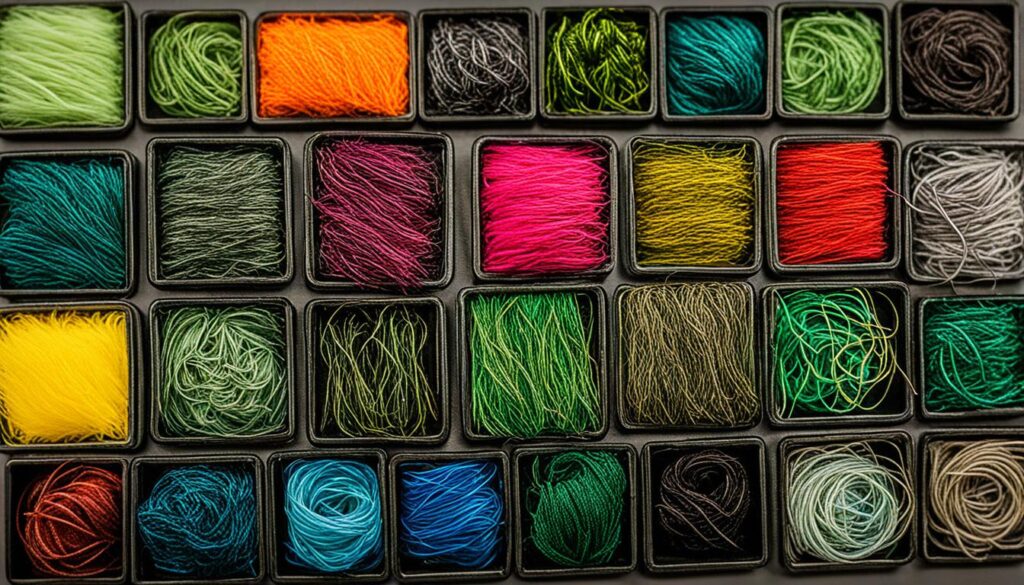
Now that we have explored the different materials used in fly tying, let’s move on to section 5 where we will wrap up our discussion and summarize the key points.
Conclusion
In conclusion, fly fishing enthusiasts can greatly benefit from exploring synthetic materials in fly tying. While natural materials have long been favored for their lifelike qualities, synthetic materials offer a wide range of benefits, including durability and a vast array of color options. These artificial materials can effectively imitate various insects and attract fish with their unique properties.
By combining synthetic materials with traditional natural materials, fly tiers can create flies that not only perform well in the water but also boast visually appealing designs. Whether you’re just starting your fly tying journey or you’re an experienced fly tier, incorporating synthetic materials into your repertoire can enhance your fly patterns and increase your chances of success on the water.
With their versatility and wide availability, synthetic materials provide endless creative possibilities. They offer the opportunity to experiment with different textures, colors, and properties, allowing fly tiers to customize their creations to suit specific fishing conditions and target species. The durability of synthetic materials also ensures that flies tied with these materials will withstand the rigors of fishing, giving anglers confidence in their patterns.
In summary, synthetic materials in fly tying offer numerous benefits, including enhanced durability, a broader color palette, and the ability to imitate a wide range of aquatic insects. By incorporating synthetic materials into their fly designs, anglers can add versatility to their fly boxes and increase their chances of success on the water. So, whether you’re a beginner or an experienced fly tier, don’t overlook the advantages offered by synthetic materials in your fly tying endeavors.
FAQ
What are the benefits of using synthetic materials in fly tying?
Synthetic materials offer benefits such as durability, a wider range of colors, and unique properties that can attract fish.
Can synthetic materials replicate the lifelike properties of natural materials?
Yes, synthetic materials can provide a similar look and feel to natural materials, especially in streamer or bait fish imitations.
How can I taper synthetic tying materials?
Tapering synthetic materials can be done using the twist and cut method, which involves twisting and tapering the fibers with a good pair of scissors to create a more lifelike presentation.
What are the essential tools for fly tying?
The essential tools for fly tying include a fly tying vise, fly tying lamps, fly tying scissors, fly tying bobbins, and fly tying pliers.
What should I consider when choosing a fly tying vise?
Factors to consider when choosing a fly tying vise include its hook size range, features such as a rotary capability, and stability in securely holding the hook.
Which fly tying vise would you recommend for beginners?
Recommended fly tying vises for beginners include the AA C-Clamp vise for its affordability, the Griffin Odyssey Spider Vise for its size range and true rotary feature, and the Peak Rotary Vise for its solid construction and versatility.
What are the different materials used in fly tying?
The materials used in fly tying include feathers for movement and realism, fur and hair for bulk and texture, threads and wires for securing materials, synthetic fibers for their durability and range of colors, and flash materials for sparkle and reflection.
